You don’t have to go to your favorite steakhouse or use a cooking thermometer to enjoy your favorite steak cut. Even cutting into the steak is unnecessary when you know this one thing. Pro chefs swear by this genius cooking hack when checking the status of the beef because it works under the broiler or on a hot grill, skillet or griddle.
“Doneness is such a preference and everyone has their own,” said Joe Flamm, chef-partner and culinary director of Chicago’s BLVD Steakhouse. “For something as simple as steak, prepared with just salt and fire, you want it exactly how you want it.”
We love a good meat probe for checking the temp on larger cuts of meat, chicken and other foods, but this gadget-free method works on steaks and burgers and saves you from having to pull out the thermometer. Here we unpack a simple trick for testing steak doneness — no equipment required — to nail it every time.
Read more: A Beef Expert Told Me the Best Cheap Steak Cuts to Look for at the Market
Practice makes perfect
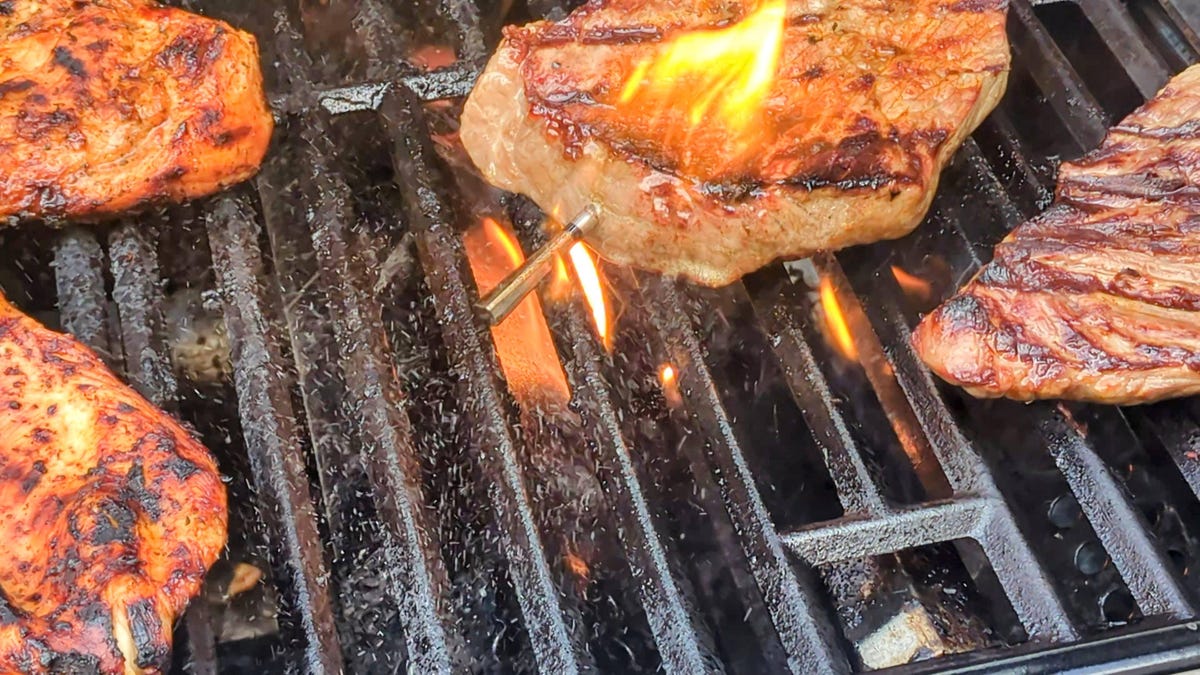
Fancy meat thermometers do a nice job at reading internal temps, but you can save some money and learn to test doneness like the pros do.
Doneness in steak is frequently associated with color, as the steak goes from bright red when rare, through various stages of pink, until it becomes well done and has the pink cooked completely out of it. (RIP, ribeye.) It’s difficult to gauge color without cutting into the steak, which you don’t want to do until it comes off of the heat and has a moment to rest. Otherwise, the juices spill out of it, making for a drier, tougher outcome, especially if you’re going to put it back on the fire for additional cooking. It’s even more important not to do this prematurely if your preference leans toward medium well or well done; you want as much juice left in the meat as possible.
Doneness is also associated with temperature, with the internal temperature of the inside of the meat typically graduating between 120 degrees Fahrenheit and 160 degrees Fahrenheit as you move between rare and well done. This can be accomplished with a meat thermometer, but there is another method frequently applied by chefs that doesn’t require any gadgets.
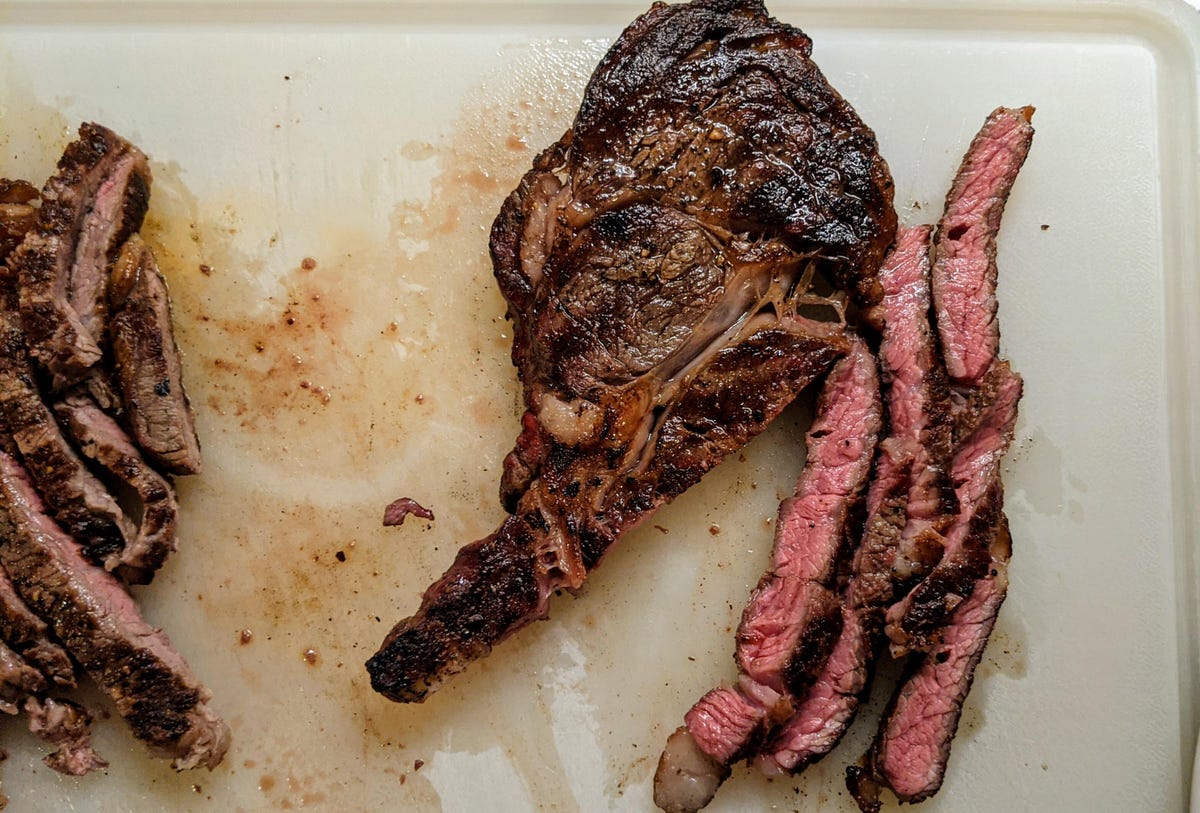
Nailing the perfect doneness for your next steak takes nothing more than a few pokes.
With bigger cuts, such as a whole prime rib roast that will be sliced after cooking, “a thermometer is super helpful for consistency and accuracy,” says Flamm, but “for smaller cuts and for speed, many chefs can check it by feel,” he says. “If you’re cooking 100 filets a night, every night, it begins to fall into place.”
Understanding doneness in steak and why overcooking is bad
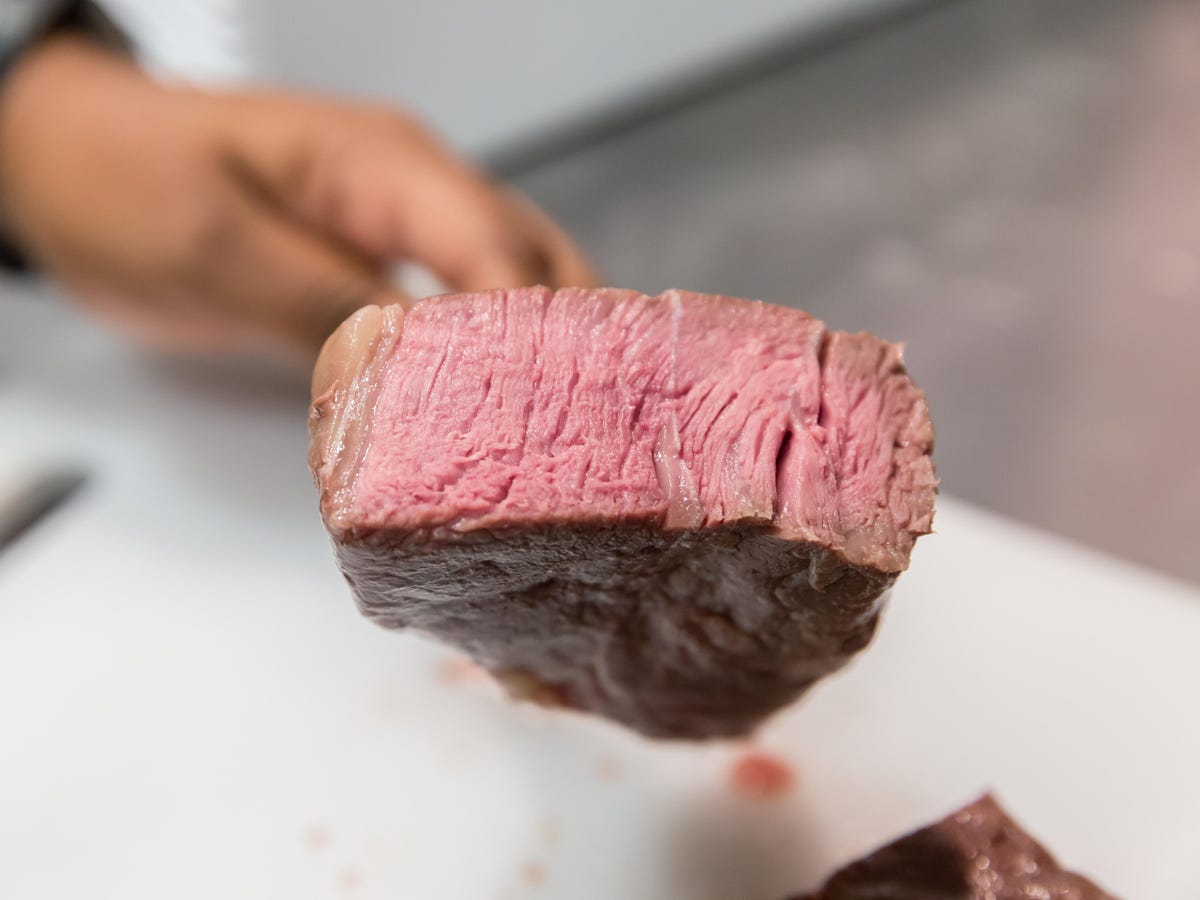
Overcooking steak is the fastest way to ruin a perfectly good piece of meat.
What’s a home cook to do who isn’t in the habit of cooking dozens of steaks on repeat, many times a week? Before we get to the shortcut trick to help you learn this, it’s important to understand the transformation your steak undergoes as it cooks to higher and higher temperatures.
In basic terms, the longer a steak cooks, the firmer the meat becomes, which has to do with the scientific process the meat is undergoing. “Whenever you cook a steak for a longer period there’s a breaking point where fat and muscle are done breaking down,” explains Flamm, “and you’re just drying out the steak and losing moisture, which gives the steak a tougher texture.” This increasingly firmer or tougher texture is key to being able to check the doneness of steak without relying on a thermometer.
Read more: I Did the Math to See if Buying Meat Online Is Cheaper Than the Grocery Store
Technique for testing doneness
Learning to check for doneness by feel doesn’t necessarily require hundreds of dollars of raw materials to get the requisite practice. Neither does it rely on any particular gadget. It’s not exactly a one-handed method, but the method only involves the use of your hands.
Whether or not you have the means and/or mentality to quit your job and go to culinary school, here’s a culinary school trick to understand doneness in meat, using the fleshy base of your thumb as a point of comparison in the resistance of the steak when poked.
Here it is: with one hand, gently touch your thumb and forefinger together, keeping the rest of your fingers relaxed, in a half-assed “A-OK” signal. You don’t want to press your thumb and forefinger together — simply make light contact between them. With the forefinger of your opposite hand gently poke the fleshy base of your thumb.

You’re not pressing down here, just giving it a quick jab. This is approximately the level of resistance you should feel for a medium rare steak when similarly jabbed in the center of the meat. (Quick aside here about clean and/or gloved hands. Also, the steak will be hot on the outside, yes, but again, a brief jab is all that’s in order.)

Subsequently, as you move your thumb to lightly touch your middle finger, the tension in the base of your thumb increases, and this represents how a medium-cooked steak should feel. As you stretch your thumb to reach the ring finger, now you’ve got medium well, and the tension in the thumb when touched with the pinkie finger reveals well done.

Regardless of how you like your steak cooked, and how you’d personally define it, now you have a consistent point of comparison available to you at all times with which to practice, whether you’re cooking steak once a week or once a year.
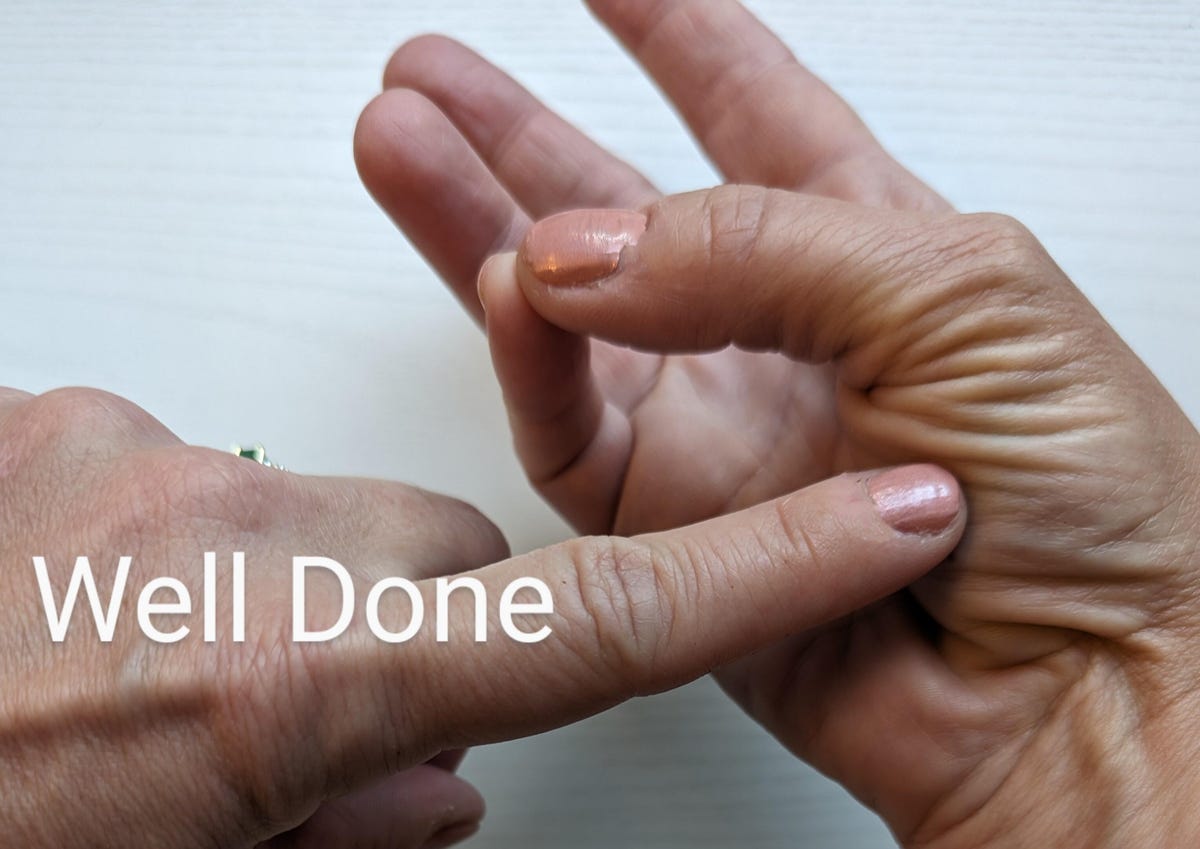
What’s the best way to cook steak?
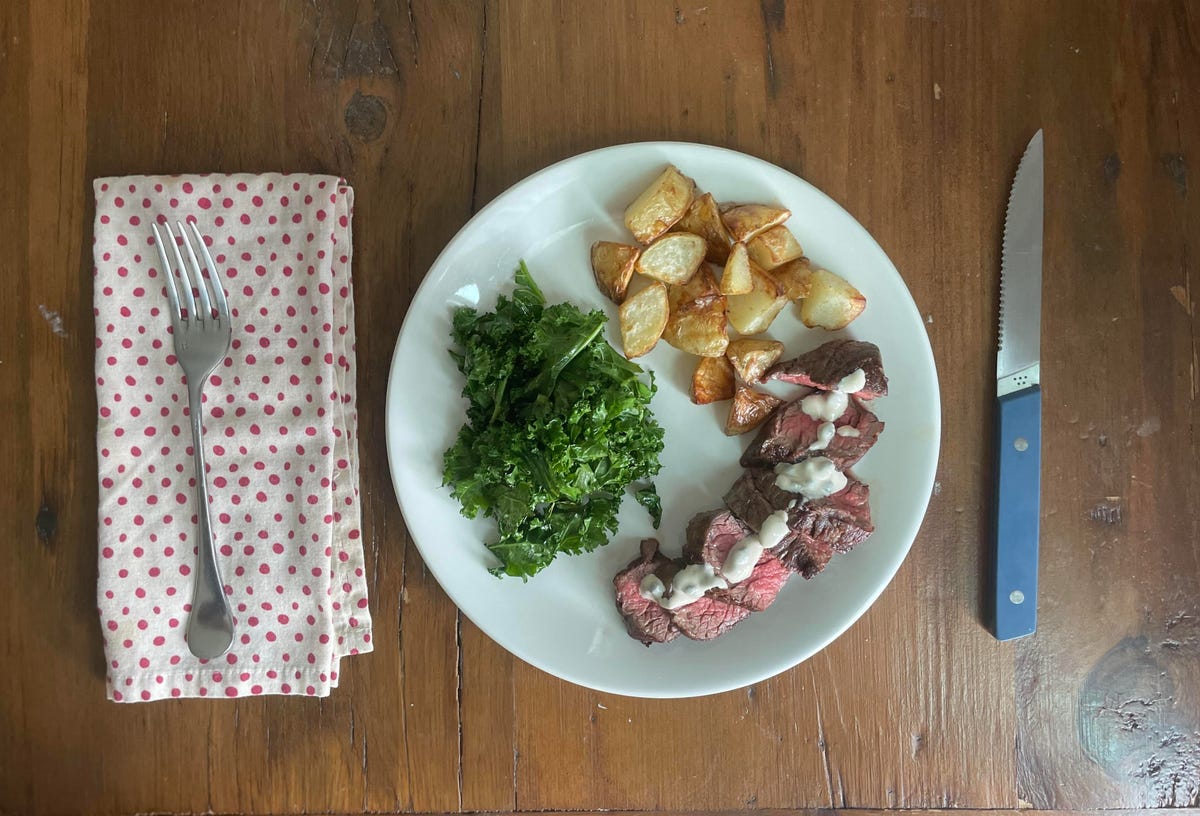
Searing steak followed by some indirect heat to bring it up to the desired doneness is the preferred method of many professional chefs.
So, what’s the best way to cook a steak? Opinions abound regarding direct heat versus indirect heat, hard searing and reverse searing, and even cooking steak in an air fryer. Flamm recommends a time-honored method: “For me, it’s searing the steak hard, and then using indirect heat to slowly let it render and come up in temp to the place where you want it to be,” he says, finishing your seared steak in the oven.
You can consult various recipes for time and temperature recommendations with the indirect heat method, just be sure to factor in that your steak will continue to cook while resting, and to take your steak out and give it a good jab every so often.
Read more: Avoid Dry Beef Syndrome: Here Are the Best Ways to Reheat Steak
